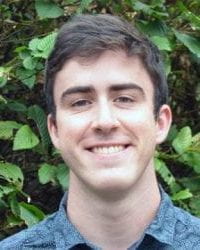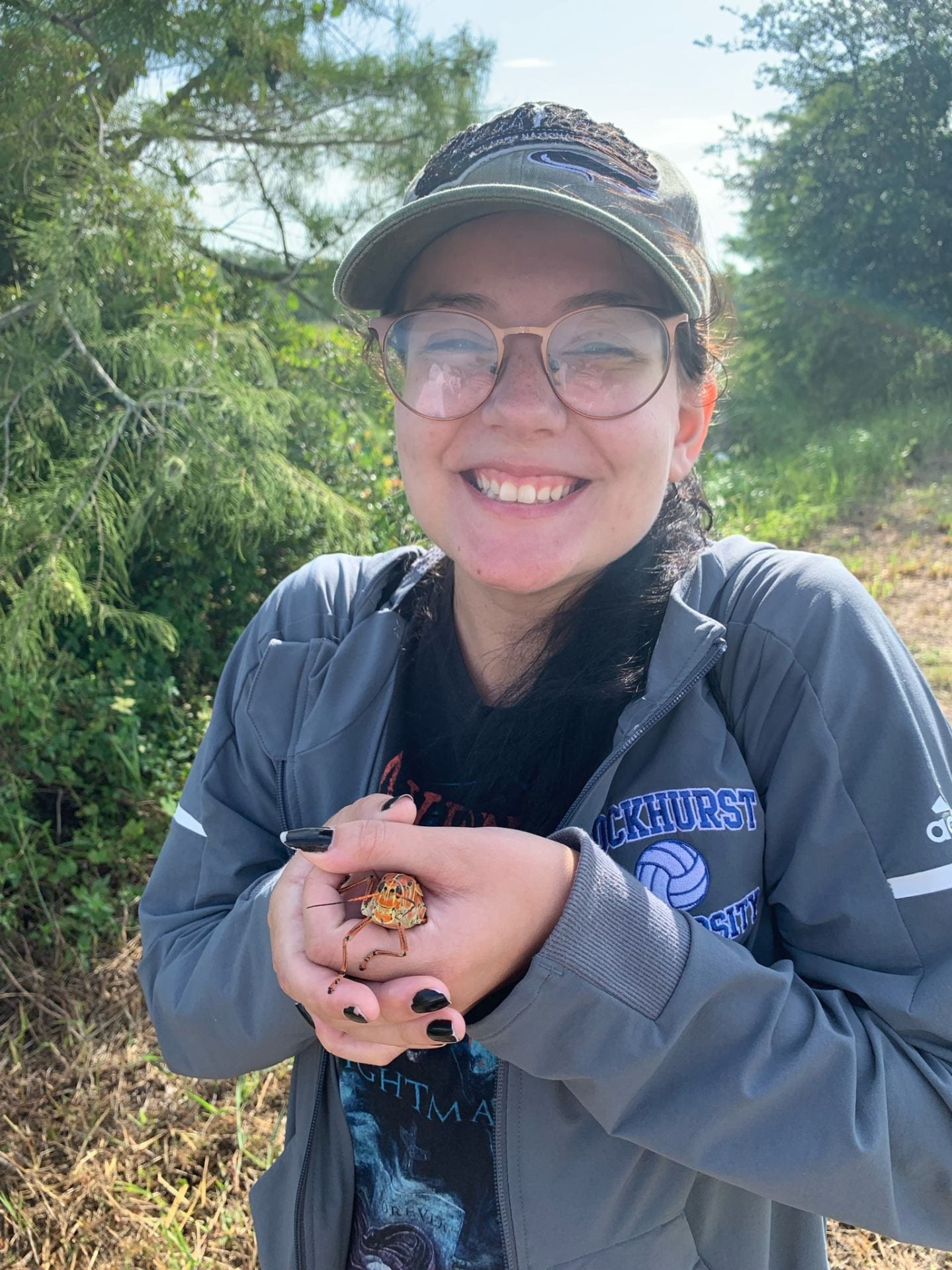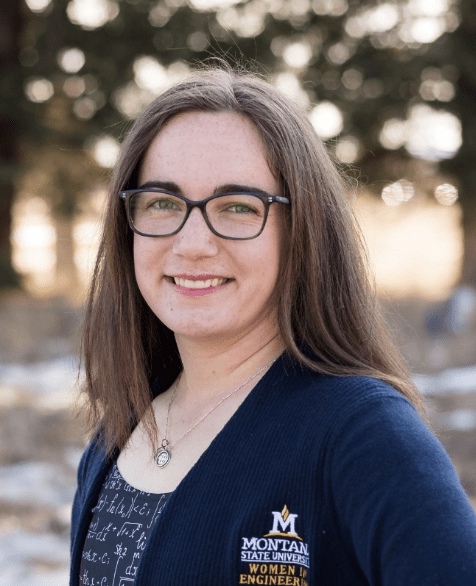Marguerite Pacheco
6th Year PhD Candidate in Biomedical Engineering
Cornell Dean’s Scholar & Sloan UCEM Affiliate
NSF GRFP Fellow
Email: map476@cornell.edu
Education
B.A. in Biochemistry; Engineering, Smith College, 2019
Research
Tendinopathies are debilitating injuries and we have a very poor mechanistic understanding of the pathogenesis and healing of this injury. I research the underlying mechanism of healing with the intent to optimize this function for therapeutic applications.
Personal Biography
Marguerite is from Montclair, NJ and enjoys playing soccer, dancing, and reading in her free time. She is actively involved in the Latinx Graduate Student Coalition, QGrads, and BMES outreach activities such as Girl Scout Engineering Day (GSED) and the Graduate Student School Outreach Program (GRASSHOPR).
Ben Johnston

4th Year PhD Candidate in Biomedical Engineering
Pre-doctoral Fellow, HSS-Cornell T32 Combined Engineering and Orthopaedics Training Program
Email: bbj9@cornell.edu
Education
B.S. in Biomedical Engineering with minor in Computer Science, Washington University in St. Louis, 2021
Research
The early stages of chronic tendon injury are not well understood. I aim to further outline the pathway and mechanisms by which fatigue loading and overuse leads to disease initiation and progression.
Personal Biography
Diane Stonestreet

3rd Year PhD Candidate in Mechanical Engineering
Pre-doctoral Fellow, HSS-Cornell T32 Combined Engineering and Orthopaedics Training Program
NSF GRFP Fellow
Cornell Dean’s Scholar
Email: ds978@cornell.edu
Education
B.S. in Mechanical Engineering, University of Maryland Baltimore County, 2022
Research
I am interested in researching how the inflammatory response may help or hinder the healing process in tendon fatigue injuries.
Personal Biography
Diane is originally from Frederick County, Maryland. In undergrad, she was highly involved as a teaching fellow, McNair Scholar, civic engagement coach, and more, and she is interested in continuing to make a social impact at Cornell. Diane is a self-proclaimed insect enthusiast, and some of her hobbies include playing video games, colorguard, and going to rock and metal concerts with her family.
Ellen Garner

2nd Year PhD Student in Biomedical Engineering
Presidential Life Sciences Fellow
NSF GRFP Fellow
Email: egb77@cornell.edu
Education
B.S. in Chemical Engineering, Montana State University, 2021
Research
I am interested in how therapeutics can be developed and used to promote regenerative, scarless healing of acute and chronic tendon injuries.
Personal Biography
Ellen is originally from Missoula, Montana. As an undergrad, she was involved in a number of athletics and academic groups. Following undergrad studies, Ellen moved to Washington state where she worked for several years as a chemist at a veterinary pharmaceutical company. Outside of the lab, Ellen loves to bike, ski, run, and paint.
Josette Vigil

2nd Year PhD Student in Biomedical Engineering
Cornell Dean’s Scholar
Email: jv458@cornell.edu
Education
B.S. in Mechanical Engineering, Northern Arizona University, 2023
Research
I am interested in studying the onset and progression of fatigue tendon injury.
Personal Biography
Josette is originally from Merced, California. In undergraduate, she was involved in tribal outreach and education, along with various community groups. In her free time, Josette enjoys spending time outdoors, running, trying new recipes, and reading.
Joe Denisco

1st Year PhD Student in Biomedical Engineering
Email: jad536@cornell.edu
Education
B.S. in Biomedical Engineering, Virginia Commonwealth University, 2024
Research
I am interested in how mechanobiology of native tendon cells drive differential healing responses in a chronic tendinopathy model.
Personal Biography
Joe (he/him) is originally from Robbinsville, New Jersey. As an undergrad, he performed research in bone mechanobiology at the Bone Engineering Science and Technology Lab and was president of the knitting club, the ‘Knitwits’. Joe joined Dr. Andarawis-Puri’s lab to incorporate the principles of mechanobiology to inform therapeutic treatment of tendinopathy. Outside of the lab, Joe loves cooking, eating, pickleball, and games.
Wendy Zimmerman

1st Year PhD Student in Biomedical Engineering
Email: wsz7@cornell.edu
Education
B.S. in Biomedical Engineering, University of Rochester, 2024
Research
I am interested in the development and delivery of therapeutics to promote tendon injury regenerative, scarless healing.
Personal Biography
Wendy (she/her) is from Saratoga Springs, NY. In undergrad, she was actively involved in ultimate frisbee, served as a TA, and was a layout editor for the Journal of Undergraduate Research. Wendy is currently the Outreach Co-Chair for the BMES executive board and is engaged in K-12 outreach activities, such as Sciencenter Family Nights and GRASSHOPR. Outside of the lab, she loves to cook, read, and hike.
Sam Allen

1st Year Masters of Science Student in Mechanical Engineering
Email: sra76@cornell.edu
Education
B.S. in Mechanical Engineering, Cornell University, 2024
Research
Sam is interested in applications of gait characteristics as a measure of tendon health and recovery following injury.
Personal Biography
Sam is originally from Woolwich Twp., New Jersey. As an undergrad, he performed material tests for numerous university groups as a lab assistant in the Bovay Lab Complex as well as being a member of the Concrete Canoe Project Team and the Track and Field Club. Outside of the lab, Sam enjoys running, backpacking, and canoeing.
